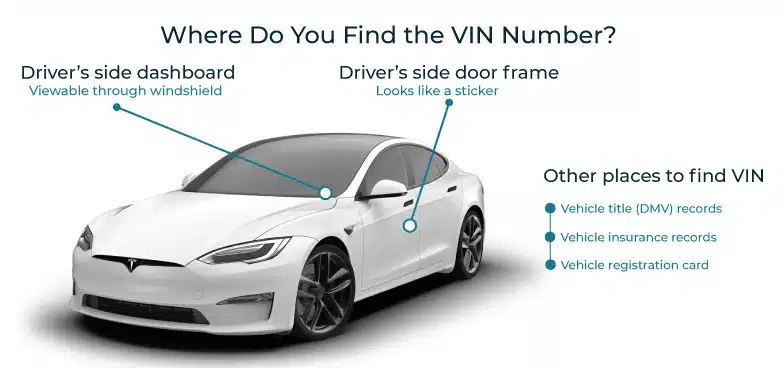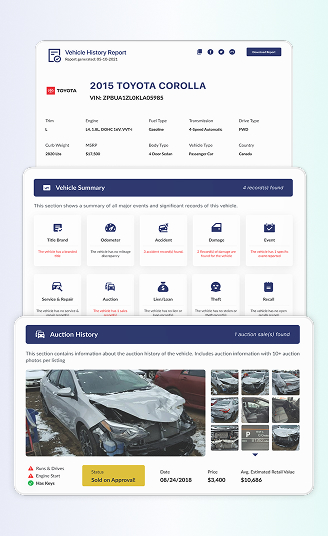
Rolls-Royce Recall Check
Your Rolls-Royce deserves certainty. Our Recall Check by Detailed Vehicle History uses your VIN to uncover safety defects, risks, and available fixes.
Confirm dealer coverage, schedule no-cost repairs, and protect performance, provenance, and value. All in one trusted report.
What is a Rolls-Royce Recall?
Rolls-Royce builds hand-crafted luxury cars (Phantom, Ghost, Cullinan, and now the electric Spectre) under the BMW Group umbrella. Premium doesn’t mean perfect, though.
When Rolls-Royce or U.S. safety regulators (NHTSA) find a defect that could raise crash or injury risk (or a part that doesn’t meet federal standards), the company must alert owners and provide a free remedy at authorized dealers.
A recall doesn’t judge overall quality; it’s about removing risk. A VIN check tells you whether your specific Rolls-Royce has an open campaign and what to do next.
Why You Should Check the Rolls-Royce Recall History?
It is wise and conscientious for any Rolls-Royce proprietor or potential purchaser to carry out a Rolls-Royce Recall Check. Manufacturers issue recalls when they discover a defect or danger in a certain car model. These recalls could be minor, such as faulty locks or power windows, or more serious, like faulty brakes or airbags.
By conducting a Rolls-Royce Recall Check, you can stay current on any recalls that may be relevant to your current vehicle or a potential purchase. Taking swift action to address a recall can help avoid accidents or injuries, as well as save you money in the long run.
Below are some extra reasons why you should check the recall:
Avoid Unsafe Rolls-Royce
Before you cruise in quietly, check in confidence. Our Rolls-Royce Recall Check uses your VIN to surface any outstanding safety campaigns or federal non-compliance. If repairs are needed, schedule the manufacturer’s no-cost fix and keep the documentation. It’s the simplest way to protect passengers, compliance, and long-term value.
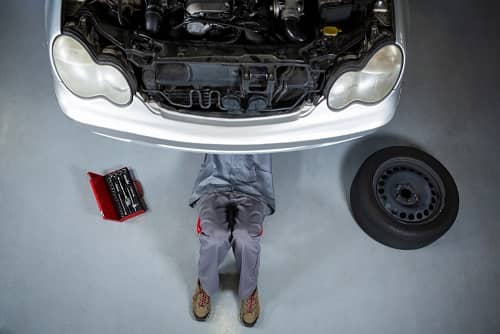

Compliance
Buying used? Verify compliance first. Our Rolls-Royce Recall Check by Detailed Vehicle History reveals outstanding defects and non-compliance, shows the no-cost remedy, and logs proof. Avoid paperwork headaches, lender or insurer pushback, and later resale trouble by confirming your car meets federal safety rules.
Avoid Out-of-Pocket Repair Bills
Run a Rolls-Royce recall check before you buy or sell. Safety defects are fixed free by the manufacturer, which can save you thousands compared to paying for similar repairs yourself. Giving you peace of mind.

How to Run Rolls-Royce Recalls?
Discovering your Rolls-Royce recall report is just a minute away! Follow these easy steps to get the information you need quickly and effortlessly:

Find your Rolls-Royce VIN
You'll need your Vehicle Identification Number (VIN) ready. Look on the driver’s side dashboard (through the windshield) or the driver’s door jamb. You can also find the VIN on your title, registration, or insurance card. Our lookup works for classic and current Rolls-Royce models.


Enter your details
Type your VIN in the form above. No VIN handy? Use your license plate number instead.


Receive Your Rolls-Royce Recall Report
We’ll show any open Rolls-Royce recalls immediately, plus key details and next steps. If a recall is listed, book the free repair at an authorized Rolls-Royce dealer for peace of mind.
What is on the Rolls-Royce Recall Check?
At Detailed Vehicle History, we make it simple to check for any existing recall notices on your Rolls-Royce. Our reports furnish you with all of the details you need to make an educated call on your vehicle, including any recalls that have not been addressed.
Explore the details below for more information:
- Date of recalls: Shows when Rolls-Royce and NHTSA issued the recall, helping you judge urgency and confirm our data is timely, accurate, and decision-ready.
- Affected Component: Identifies the exact Rolls-Royce part involved, so you know what’s wrong and can discuss repairs confidently with any dealer or mechanic.
- Remedy: Details the manufacturer’s free fix. You’ll see where to go and what’s covered, reducing hassle and avoiding out-of-pocket surprises.
- Next step for the affected Rolls-Royce: Confirm if your Rolls-Royce is listed under the recall and schedule repairs. With a complete Vehicle Report, you’ll also see past recalls and repair status.
A Rolls-Royce vehicle history report also includes title brand check, auction history, vehicle usage record & ownership history, mileage records, and more. Review the records below:

Title Brand Check
Flags titles like salvage, rebuilt, flood, lemon, and buyback. Branded titles can complicate dealer repair logistics and insurance, and they matter when you’re judging resale value.
Auction History
When/where the car crossed the block, with details like date, average estimated retail value, condition details, and even up to 10 auction photos when available. Useful for spotting previously repaired damage or missing equipment.
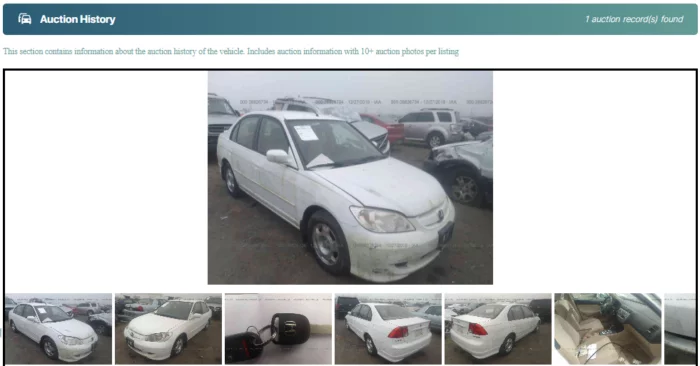

Vehicle Usage Record & Ownership History
Shows the number of owners and tenure by state/region. Short flips and frequent moves can hint at deferred maintenance; long single-owner periods often correlate with complete records.
Mileage Records
Odometer readings over time from multiple sources. Odd jumps or rollbacks are red flags; clean trends support value and trust.


Theft Records
Checks for theft/recovery events. Crucial for collector cars and for clean import/export paperwork.
Lien/Loan Records
Verifies whether a lender still has a financial interest, so the title transfer is smooth at the sale.
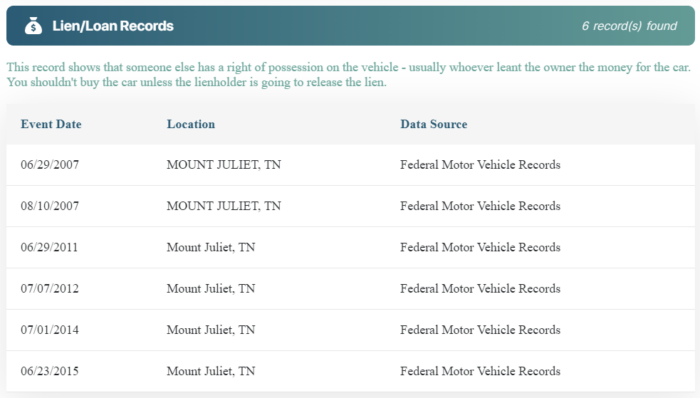
Common Issues Leading to Rolls-Royce Recall
Rolls-Royce vehicles have faced several recalls due to safety and reliability concerns. Common issues include brakes & stability control.
When checking for a Rolls-Royce, several factors come into play. Here’s a breakdown of elements that could affect your Rolls-Royce and lead to a recall:
Brakes & Stability Control
Power Assist/ABS/DSC
Certain vehicles were built with an integrated brake system that may not work to spec. If it acts up, you can lose power brake assist and possibly ABS/DSC support. This results in longer stopping distances and shakier stability in an emergency.
Includes 2024–2025 Rolls-Royce Spectre (alongside multiple BMW models). This recall was under the NHTSA Campaign 24V-104, report date February 12, 2024. Owner letters were planned for April 5, 2024; dealers will replace the integrated brake unit free of charge.
Later, a tiny batch of two 2024 Spectre units (built April 15 & April 26, 2024) needed the DSC-integrated hydraulic unit replaced due to a servo-motor issue; dealers were told “do not sell/lease/deliver” until fixed (stop-delivery). This recall was under the NHTSA Campaign 24V-697; bulletin published October 8, 2024.
Seat Belts
Child-seat locking function
In some of the 2021 Rolls-Royce Phantom, Ghost, and Cullinan (part of a broader BMW/MINI action), the automatic locking retractor (ALR) in some seat belts could deactivate too soon, making it harder to secure a child seat properly. That’s an injury risk in a crash.
High-Voltage/Electrical Safety
Spectre ground connection
In some of the 2024 Rolls-Royce Spectre; about 107 vehicles were built from October 24–December 11, 2023. The adhesive residue on the eyelet of a ground cable between the front e-motor and chassis could raise electrical resistance. So, in a rare insulation fault, there’s increased technician shock risk during diagnostics and an extremely rare thermal-event risk.
Rear visibility: camera image problems
The screen doesn’t rise, camera view is blocked
On some 2019–2022 Rolls-Royce Phantom, the Central Information Display (the screen that pops up) might not lift to the correct height, partially blocking the backup-camera image. That reduces rearward visibility.
The camera image can be set too dim/contrasty to meet the rule
A software quirk meant the driver could set brightness/contrast so low/high that the image no longer met FMVSS 111. That’s a compliance failure and a back-over risk if you rely on the screen.
External lighting
Brake lights too dim (FMVSS 108 photometry)
Some 2019 Rolls-Royce Cullinan stop-lamps didn’t meet the required brightness. Dim brake lights make your deceleration less obvious to traffic behind.
Headlamps are missing a metallic coating (road sign illumination)
Two of the 2023 Phantoms had headlamps that may not have received a required coating during supplier production. That can reduce upper road-sign illumination (a non-compliance). All affected cars were still at dealers; owners didn’t need letters. The fix is a headlamp replacement.
Other Notable Issues
Instrument-panel glass
The single-layer tempered glass covering the Ghost’s instrument cluster can shatter into small pieces in certain high-speed side impacts. The risk of injury is “very low,” but still a risk, so field cars get a protective coating; production switched to laminated glass in December 2022.
Understanding the Rolls-Royce Recall Process
NHTSA reviews safety complaints and, when a defect is confirmed, the automaker must issue a recall under NHTSA oversight. You can then check your Rolls-Royce by VIN and get a free remedy at a dealer.
Discover the full breakdown of the Rolls-Royce Recall Process below:
Report the Problem
Notice something unsafe on your Rolls-Royce? File a complaint with NHTSA. Your report is logged, compared across VINs, and helps trigger formal investigations.
Investigation
Once a complaint is submitted, the NHTSA follows a multi-step process to determine whether a recall is necessary.
- Screening: NHTSA’s Office of Defects Investigation reviews patterns in complaints and other data.
- Analysis: Defect petitions are reviewed in detail. If denied, the decision and reasoning are publicly posted in the Federal Register.
- Investigate the Issues: When Rolls-Royce’s safety concerns are confirmed, NHTSA launches a formal investigation, ending in either no defect or a recall.
- Recall Management: NHTSA ensures owners are notified and monitors repair completion rates.
Recalls
A safety recall means the manufacturer must inform owners and correct the problem. Recalls happen when a vehicle or component is unsafe or doesn’t meet regulations. Most are voluntary, and manufacturers are required to repair, replace, refund, or buy back the affected vehicle.
How Rolls-Royce Vehicle Recalls Are Handled
When a safety problem is found on a Rolls-Royce, three groups work together: the manufacturer, NHTSA, and you, the owner.
This teamwork finds defects, informs drivers, and makes sure fixes are completed to keep your vehicle safe and legal. Below is a detailed breakdown of each role.
Automaker Role
When engineering data, field reports, or supplier alerts suggest risk, Rolls-Royce (within BMW Group) opens an internal investigation: reproduce the fault, map affected VINs, and define a remedy. Once a U.S. safety or compliance issue is confirmed, the company files with NHTSA (defect info, risk, remedy, population, dates) and drafts owner notifications at no cost.
Dealers get service instructions, parts allocations, and a “stop-delivery” order if risk warrants it. Repairs are no-charge and tracked to your VIN until closed.
NHTSA’s Role
NHTSA collects owner complaints, warranty/field data, and manufacturer reports. If patterns suggest risk, the agency opens screening, analysis, and (when warranted) a formal investigation.
NHTSA also reviews the wording and timing of owner letters, posts campaign files publicly (owner letters, dealer instructions), and tracks completion rates until the risk is addressed.
Your Role as the Vehicle Owner
Your job is simple but vital:
- Check your VIN periodically, especially before road trips, resale, or after buying used.
- Read the notice; some campaigns are routine. A few include usage limits or “do not drive/park outside” guidance.
- Book the free repair promptly with an authorized Rolls-Royce service center; bring the letter, registration, and all keys.
- Keep receipts. If you paid for the same defect before the recall, reimbursement is often available within the window stated in the letter. If parts are delayed, ask to be on the waitlist and re-check your VIN regularly.
Get Rolls-Royce Window Sticker by VIN
A Rolls-Royce window sticker by VIN consolidates factory options, safety and convenience features, paint/trim, and original pricing on one easy label. That clarity helps you confirm recall-related equipment (cameras, lighting, driver assist) is present and correct, and that the spec matches the seller’s pitch. Add it to your report to strengthen offers, reassure lenders and insurers, and protect resale on your Rolls-Royce, whether it is Ghost, Phantom, Cullinan, or Spectre.
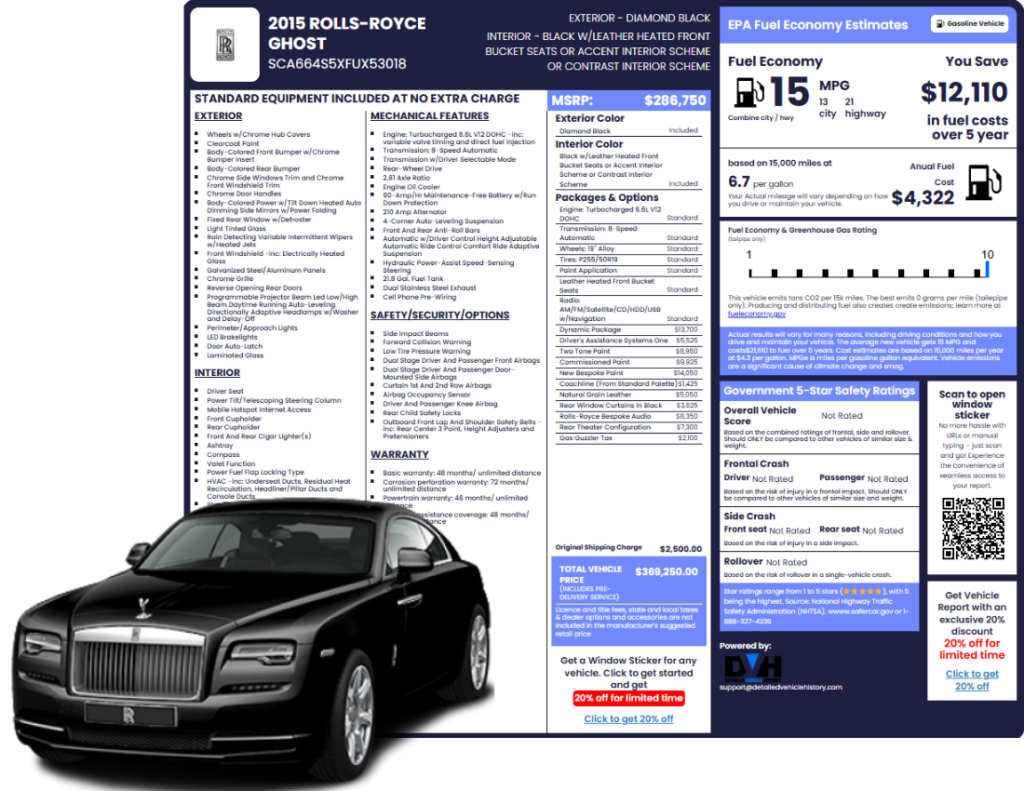
Why Use Detailed Vehicle History to Check Rolls-Royce Recall?
A Rolls-Royce deserves more than a quick recall blurb. Our Rolls-Royce Recall Check pairs official recall status with a full vehicle history: title brands, prior damage, odometer readings, ownership history, lien checks, sale and auction traces, and service snapshots where available.
The result? Fewer surprises, smoother financing and insurance, and stronger resale. Whether you’re buying, selling, or maintaining, Detailed Vehicle History gives you practical, connected facts. So you can schedule free recall repairs and make smarter decisions in one pass.
Recall Check For Others Manufacturers
FAQ about Rolls-Royce Recalls Check
Are Rolls-Royce recall repairs really free?
Yes. Safety-recall remedies are no-cost at authorized dealers, regardless of warranty status; the law requires repair/replace/refund (and rarely repurchase) to correct safety defects.
Which Rolls-Royce models have recent U.S. recalls?
As of October 2025, examples include 2024 Spectre (electrical ground cable; later brake module units), 2018–2019 Phantom and 2019 Cullinan (rear-camera compliance), and 2023 Phantom (headlamp coating). Always verify your Rolls-Royce recall status.
Can I drive my Rolls-Royce with an open recall?
Follow the letter. Many recalls allow normal driving until repair; some include usage limits or stop-drive/stop-sale instructions until fixed (dealers must obey stop-delivery orders).
What if parts aren’t available yet?
Your status may show “Remedy Not Yet Available/Interim.” Ask the dealer to add you to their parts waitlist and re-check the VIN weekly. We also recommend staying in contact and documenting delays.
How will I be notified of a Rolls-Royce recall?
Manufacturers mail owner letters using DMV registration data, but second/third owners may be missed. That’s why NHTSA urges drivers to check VINs periodically.
Do recalls affect Rolls-Royce resale value?
Open recalls can hurt value and financing/insurance; completed recall repairs with documentation tend to restore confidence.
Can I get reimbursed if I already paid for the same fix?
Often yes, owner letters outline reimbursement windows and proof required (receipts, VIN, payment). Bring documentation to the dealer or contact customer care.
Where do I check recalls for older, classic Rolls-Royce models?
NHTSA’s public VIN tool shows incomplete safety recalls for roughly the last 15 calendar years; older, fully remedied campaigns may not appear, so owners of classics should ask the brand to search historic actions, or for a more convenient way, you can check at the Rolls-Royce Recall check by Detailed Vehicle History for Classic Rolls-Royce.
Is a dealer required, or can any shop perform recall repairs?
Use an authorized Rolls-Royce/BMW Group facility so the campaign closes against your VIN and the repair is reimbursed properly.

